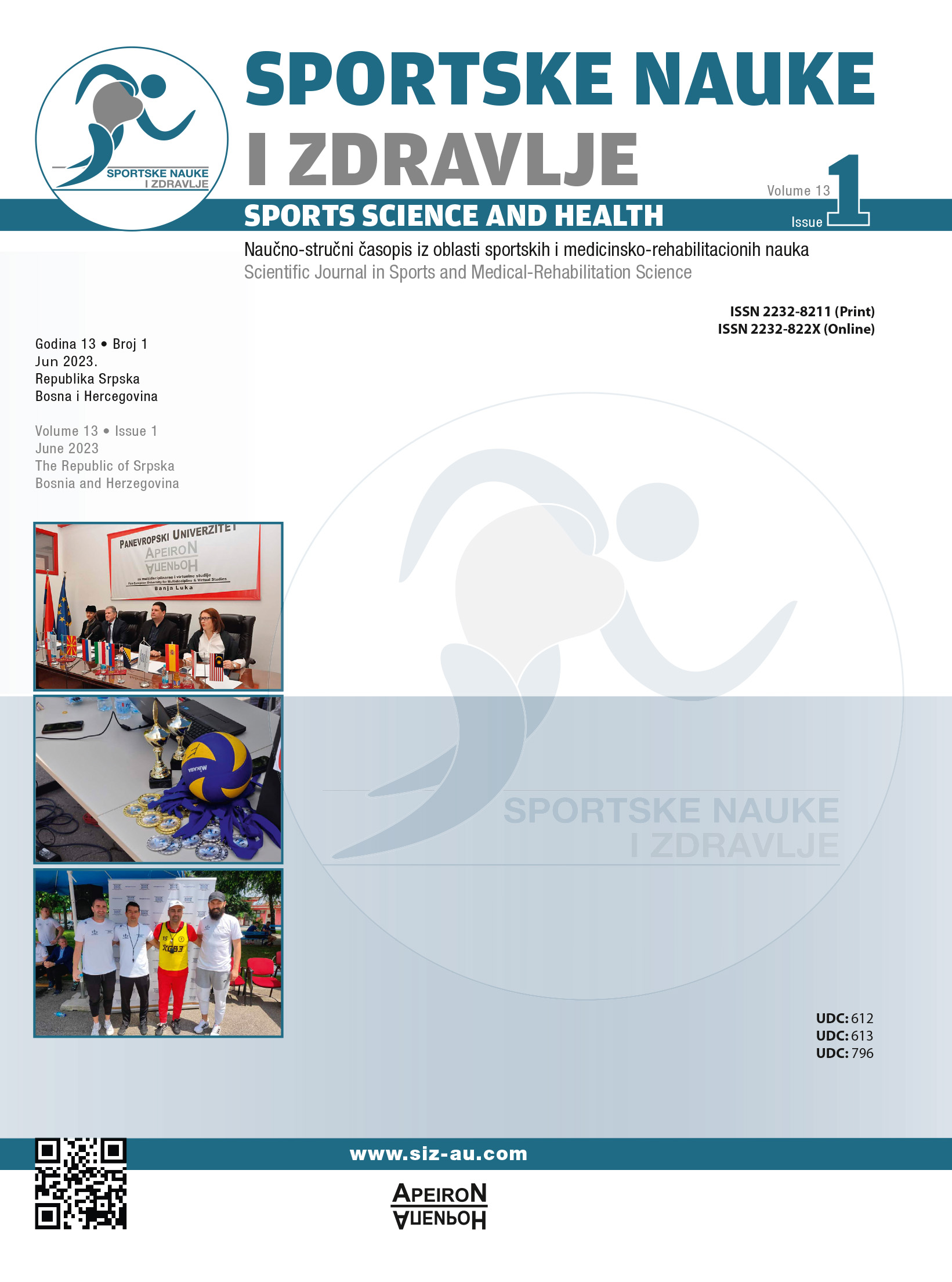Impact of Lumbopelvic Hip Complex Exercises on Upper Extremity Range of Motion, Strength and Functonal Performance Among Collegiate Overhead Athlete
DOI:
https://doi.org/10.7251/SSH2301031MAbstract
An overhead athlete is a sportsperson who engages in activities that necessitate the use of the upper body in a forward and upward action, such as pitching a baseball, throwing a softball, spiking a volleyball, serving a tennis ball, swinging a golf club, passing a football, or launching a javelin. The arm needs to move to different locations and speed up along very specific trajectories for each of these tasks. To determine the impact of lumbopelvic hip complex exercises on upper extremity range of motion, strength and functional performance among collegiate overhead athletes. Based on the selection criteria, 46 people were recruited, however, only 40 of them did the lumbopelvic hip complex exercise. Six people were drop outs as they didn’t meet the loads of the exercise. The subjects who took part did two sets of ten repetitions five days a week for twelve weeks. The order of the exercises was chosen by each person. All of the people on the intervention team were given a moderate level of resistance, which they used for the whole study. College overhead athletes showed statistically significant improvement in functional performance when CKCUEST was employed to describe performance (19.32±1.55-21.37±1.71) (t=18.458). The results of a paired t-test reveal a statistically significant (i.e., p<0.001) difference when the means are compared. Twelve weeks of lumbopelvic hip complex training has a significant influence on the range of motion, strength, and functional performance of the overhead throwing players in collegiate athletes.
